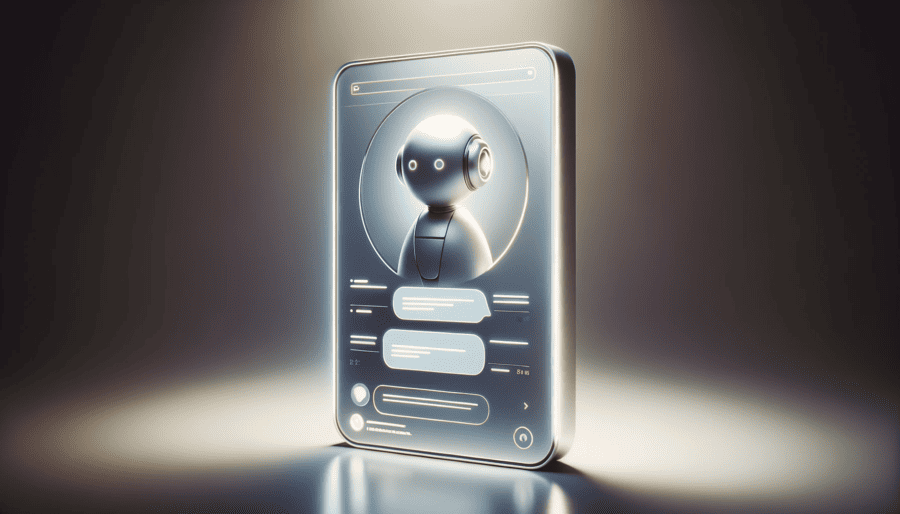The Emergence of Chatbots
In the vast digital universe, communication between companies and customers has become more essential than ever, and who better than a "chatbot" can make this interaction a real spectacle? But before diving into the magic of chatbots, let's take a little step back to understand how they were born.
In the 1950s, Alan Turing, a computer genius, dreamed of making computers think. He even proposed an experiment called the "Turing Test" to verify if a computer could be considered "intelligent."
But the real show begins with the advent of the internet and the explosion of digital technologies. The first chatbots, like ELIZA and PARRY in the 1960s and 1970s, made their debut, resembling impromptu actors on a digital stage.
Definition of a Chatbot
They have become increasingly popular with the expansion of the digital industry. Companies of all sizes are implementing chatbots to improve customer service efficiency, automate repetitive tasks, and provide a more personalized user experience.
They can operate on various platforms, including websites, messaging applications, and social media.
The concept of chatbots may seem complex, but their main function is simple: to respond to user questions quickly and accurately.
This can range from simple requests for information, such as store opening hours, to more complex tasks, such as booking an appointment or making an online purchase.
In this regard, chiama.ai, a startup by Colibryx, aims to achieve this result. If you are curious or want to try this type of artificial intelligence, do not hesitate to contact us.
The Role of Artificial Intelligence in Chatbots
A chatbot powered by artificial intelligence (AI) uses machine learning algorithms to understand the meaning and purpose of user questions, enabling it to provide accurate and relevant answers.
These responses can range from simple data, such as store hours, to complex interactions like solving technical problems.
How do Chatbots Work?
First, Chatbots receive and interpret input from users.
This input can be textual (such as questions or comments) or specific commands.
Algorithms analyze this input and identify the context and the user's intent. Then, it processes an appropriate response.
This response is generated using a mix of predefined rules, artificial intelligence, and machine learning.
Machine learning is particularly important because it allows the chatbot to learn and improve over time, making its interactions increasingly precise and useful. Finally, the response is sent to the user.
This process takes place in seconds, allowing for a smooth and natural interaction. The ultimate goal is to create a user experience that is as close as possible to a conversation with a human being.
Chatbot Efficiency: Time and Resource Savings
Time savings are not only on the business side but also on the customer side.
They can provide immediate answers to common questions, eliminating the wait for a human operator. Furthermore, they are designed to be intuitive and easy to use, making the interaction smoother and less frustrating for the user.
Finally, they can also contribute to saving resources in terms of staff training, as they are programmed to handle specific types of requests and do not require continuous skill updates like a human operator would.
This means that resources that would have been dedicated to training can instead be directed towards other strategic areas of the company.
Integration of Chatbots in Various Industries
For example, the tourism industry is using chatbots to manage customer bookings, answer frequently asked questions, and offer personalized travel suggestions.
Similarly, restaurants use them to answer questions, take orders, and make 24/7 customer reservations (just like chiama.ai).
Likewise, the healthcare sector is implementing them to manage appointments, provide health advice, and monitor patient symptoms.
These chatbots can suggest products based on customer preferences, answer questions about products, and efficiently process orders.
In general, the integration of chatbots is revolutionizing how companies interact with customers, making operations smoother and improving customer satisfaction.
Adopting chatbots in your digital strategy offers numerous advantages.
For example, chatbots can handle hundreds of requests simultaneously, which would be impossible for a human customer service team.
They can also learn from past interactions and constantly improve their responses.
They can also be integrated with various communication channels, such as websites, mobile applications, and social media platforms, making customer support more accessible.
Using chatbots in the digital strategy can also help companies better understand their customers. By tracking user interactions with the chatbot, companies can gather valuable data on customer preferences and behaviors.
This information can be used to further personalize the customer experience and make more informed marketing decisions.
They represent an effective and efficient solution to improve customer interaction and optimize business resources.
Adopting chatbots in your digital strategy is no longer an option but a necessity to remain competitive in today's digital market, and chiama.ai could be the ideal solution for you!
It can handle an unlimited number of phone lines simultaneously and operate 24/7, offering continuous and reliable customer support.
The goal of chiama.ai has always been to develop an intelligent digital assistant that empowers customer relationships and significantly simplifies the daily work of business owners and staff.
Implementing chiama.ai in your digital strategy will allow you to improve customer interaction and optimize business resources, making you more competitive in today's digital market.
